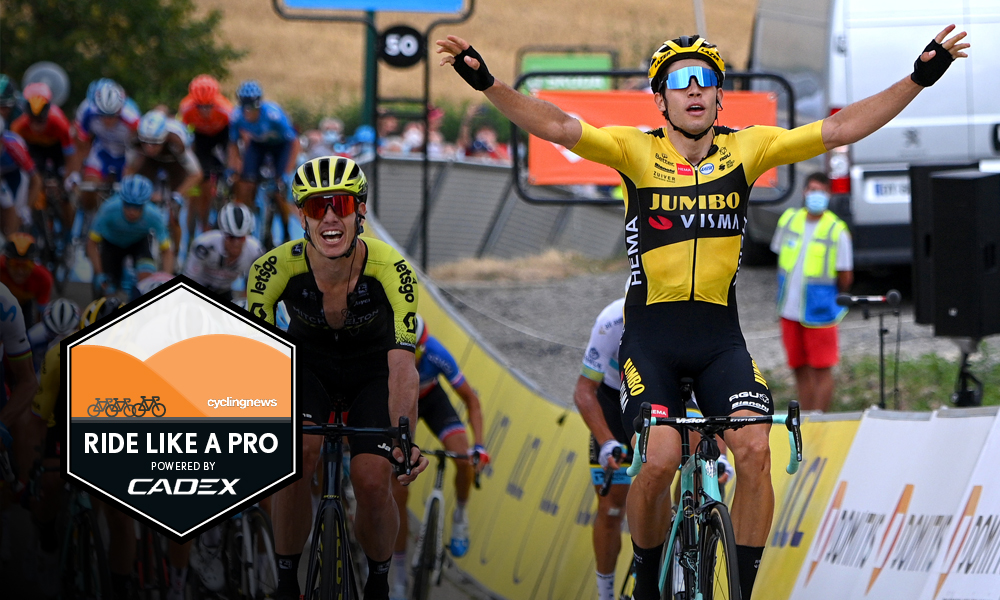How to train like a pro cyclist
Want to get fitter, stronger and race like a pro cyclist? We take a closer look at five ways to boost your performance on the bike

While professional cyclists go through strenuous training regimes all-year-round, it's often not possible or advisable for amateur cyclists to completely replicate their training plans. There are a number of training methods that can be utilised by amateurs to 'train like a pro' to maximise their own performance and get race-ready in the process.
1. Personalised coaching
Each athlete responds individually to a specific training stimulus. The number of hours (volume), intensity and recovery needed to maximise your training differs from one person to the next and, for this reason, a personalised training schedule will enable you to unlock your potential.
It's vitally important that one structures your training to your personal needs and availability, allows for adequate recovery between major sessions and aims for realistic goals. When you or your coach tailor a training program to your strengths, weaknesses and your goals, both the structure and your training time will provide the first major step into structured training.
There are a couple of things you can do to ensure your training is on the same level as a professional athlete:
2. The off-season break
The transition phase from season to season can often be a very confusing time for most athletes as many are unsure of what to do during this period.
This period should be used to take a short break from training and allow yourself to recharge - both from a mental and physical perspective as well as provide you with a chance to review your season and plan ahead for the next.
- The off-season: how the pros transition from race to rest and start again for next year
- Winter cycling training tips: A comprehensive guide
3. The polarised training model
Pro cyclists polarise their training by spending large amounts of time (roughly 75-80%) at low intensity (in zone 2), coupled with a smaller amount of time (15-20%) at a high intensity (zone 4+).
The latest race content, interviews, features, reviews and expert buying guides, direct to your inbox!
Many amateurs are guilty of spending too large a total training time doing 'junk miles' where they are not training hard enough to make good progress or not going easy enough to aid recovery or stimulate adaptation. Make the hard sessions hard, and the easy sessions easy - this is one of the keys to success.
- Why riding slower will make you race faster
- Understanding FTP: how to perform your own test indoors
High-Intensity Interval Training (HIIT) is a tool used by pro and amateur athletes alike to gain the most from their training while utilising a polarised training approach. The aim is to marry sessions of HIIT with low-intensity longer training sessions to maximise your performance improvements.
HIIT is used to accumulate a greater amount of time at a high intensity than one continuous effort. This type of interval often mimics race-day efforts, which helps prepare individuals for the intensity and efforts associated with racing.
- Cycling training tips: 10 time-saving tips
4. Incorporate strength training into your plan
There is a growing litany of research which shows adding strength work to your endurance training regime helps improve overall performance, with a large portion of pro cyclists now incorporating this new way of thinking into their personal programs.
Strength training can have a positive influence on your training when done correctly. The goal of a strength training regime should include exercises where the muscle action, muscles engaged, and the movement pattern should mimic the rotational pedalling action of riding a bicycle.
It is important to remember that endurance training takes preference for the time-constrained athlete.
- Strength training for cyclists: A beginner's guide
- Cycling strength training program
5. The secret of recovery
Performing hard sessions continuously without allowing sufficient recovery between sessions is a common error made by most amateur cyclists, especially those with time constraints. Pro cyclists place a special emphasis on recovery to ensure they get the best out of their training.
Recovery can be carried out in a passive (a complete rest day) or active (an easy recovery session) fashion. Pro cyclists are highly trained individuals and we often find that they respond better to active recovery methods than passive recovery methods. This may be the case for many well-trained amateur athletes as well.
You should include at least one active recovery session in your training plan every 3- 4 days. Those who have less training history may initially respond to passive recovery greater. I would advise consulting your coach on the forms of recovery that you respond to best and utilise these to optimise your training.
Jarred Salzwedel completed his Honours degree in Sports Science at the Nelson Mandela Metropolitan University in 2013. His Master's degree focused on investigating training adaptations to differing high-intensity interval training programmes in cyclists.
He has raced both on the road and track at a National level in the Junior ranks which led to his interest in the science behind training and conditioning, as well as his passion to help athletes optimise their performance.
Jarred owns and manages Cycle Dynamic Coaching - a coaching platform that looks after and advises some of South Africa’s top Road and Track cyclists. He has extensive knowledge in exercise physiology having previously focused on the physiological testing of endurance athletes.

